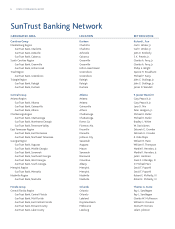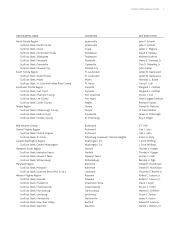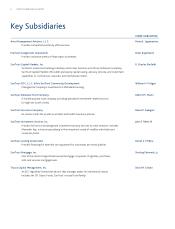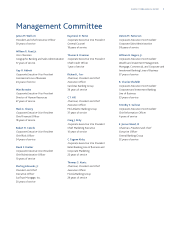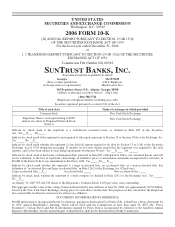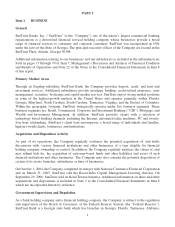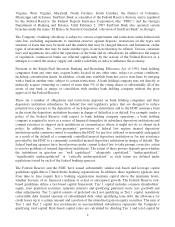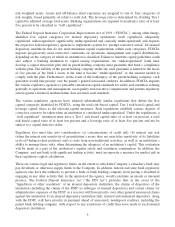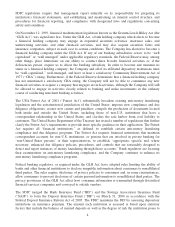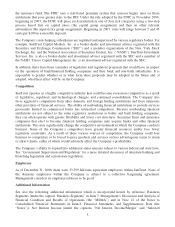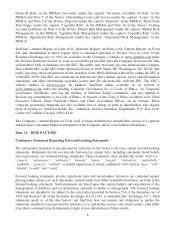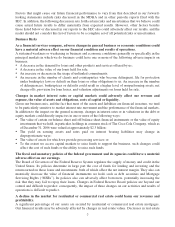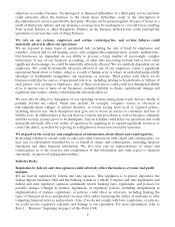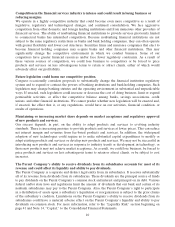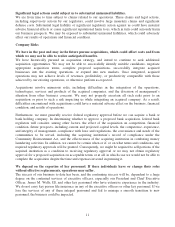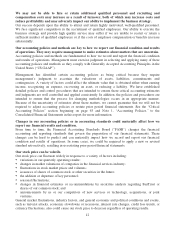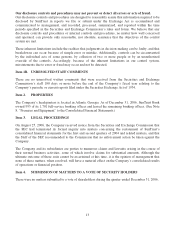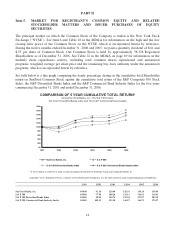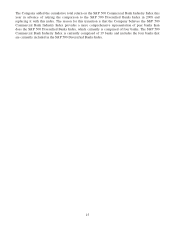SunTrust 2006 Annual Report Download - page 18
Download and view the complete annual report
Please find page 18 of the 2006 SunTrust annual report below. You can navigate through the pages in the report by either clicking on the pages listed below, or by using the keyword search tool below to find specific information within the annual report.the insurance fund. The FDIC uses a risk-based premium system that assesses higher rates on those
institutions that pose greater risks to the DIF. Under the rule adopted by the FDIC in November 2006,
beginning in 2007, the FDIC will place each institution in one of four risk categories using a two-step
process based first on capital ratios (the capital group assignment) and then on other relevant
information (the supervisory group assignment). Beginning in 2007, rates will range between 5 and 43
cents per $100 in assessable deposits.
The Company’s non-banking subsidiaries are regulated and supervised by various regulatory bodies. For
example, SunTrust Capital Markets, Inc. is a broker-dealer and investment adviser registered with the
Securities and Exchange Commission (“SEC”) and a member organization of the New York Stock
Exchange, Inc. and the National Association of Securities Dealers, Inc. (“NASD”). SunTrust Investment
Services, Inc. is also a broker-dealer and investment adviser registered with the SEC and a member of
the NASD. Trusco Capital Management, Inc. is an investment adviser registered with the SEC.
In addition, there have been a number of legislative and regulatory proposals that would have an impact
on the operation of bank/financial holding companies and their bank and non-bank subsidiaries. It is
impossible to predict whether or in what form these proposals may be adopted in the future and, if
adopted, what their effect will be on the Company.
Competition
SunTrust operates in a highly competitive industry that could become even more competitive as a result
of legislative, regulatory and technological changes, and continued consolidation. The Company also
faces aggressive competition from other domestic and foreign lending institutions and from numerous
other providers of financial services. The ability of nonbanking financial institutions to provide services
previously limited to commercial banks has intensified competition. Because nonbanking financial
institutions are not subject to the same regulatory restrictions as banks and bank holding companies,
they can often operate with greater flexibility and lower cost structures. Securities firms and insurance
companies that elect to become financial holding companies may acquire banks and other financial
institutions. This may significantly change the competitive environment in which the Company conducts
business. Some of the Company’s competitors have greater financial resources and/or face fewer
regulatory constraints. As a result of these various sources of competition, the Company could lose
business to competitors or be forced to price products and services on less advantageous terms to retain
or attract clients, either of which would adversely affect the Company’s profitability.
The Company’s ability to expand into additional states remains subject to various federal and state laws.
See “Government Supervision and Regulation” for a more detailed discussion of interstate banking and
branching legislation and certain state legislation.
Employees
As of December 31, 2006, there were 33,599 full-time equivalent employees within SunTrust. None of
the domestic employees within the Company is subject to a collective bargaining agreement.
Management considers its employee relations to be good.
Additional Information
See also the following additional information which is incorporated herein by reference: Business
Segments (under the caption “Business Segments” in Item 7, Management’s Discussion and Analysis of
Financial Condition and Results of Operations (the “MD&A”) and in Note 22 of the Notes to
Consolidated Financial Statements in Item 8, Financial Statements and Supplementary Data (the
“Notes”)); Net Interest Income (under the captions “Net Interest Income/Margin” and “Selected
5


